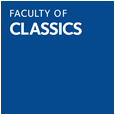This chapter considers the evidence for urban life and urban change at Aphrodisias in the long sixth century, drawing in particular on the evidence from recent excavations in the ‘Place of Palms’ that shows late antique rebuilding of the monumental pool and the surrounding colonnades there, which can be associated also with evidence for repairs to the Hadrianic Baths, the North Agora, the bouleuterion, and parts of the city wall shortly before or around AD 500. This enormous building and repair programme speaks eloquently to the vitality of urban life at Aphrodisias as the sixth century opened. Gameboards and graffiti around the rebuilt pool shed light on the use of this public space during the sixth century, while epigraphic and archaeological evidence allow us to trace further changes to the monumental architecture of the city centre. These include the construction of a header tank to continue supply to pressurised fountains around the monumental pool, perhaps in the reign of Justinian, and the apparently contemporary creation of a street fountain (‘Gaudin’s Fountain’) elsewhere in the city; and evidence for continued use of and repairs to the monumental Hadrianic Baths, whose floor paving was repaired and re-set as late as AD 610 or after. Finally, the end of the monumental city in the early seventh century is discussed, and its possible connection with the Persian invasions of Asia Minor; a series of burned deposits suggest multiple conflagrations around the city in the period AD 614–616, and the recent excavations show that these fires were followed soon afterwards by an earthquake. There is evidence for an organised clean-up of much of the destruction debris, showing some continued civic organisation, but thereafter the city never regained the monumentality it had had before.
Aphrodisias in the long sixth century
Keywords:
APHRODISIAS EARTHQUAKES FIRE PERSIAN INVASION SIXTH CENTURY SEVENTH CENTURY LATE ANTIQUITY BUILDING ACTIVITY EUERGETISM



